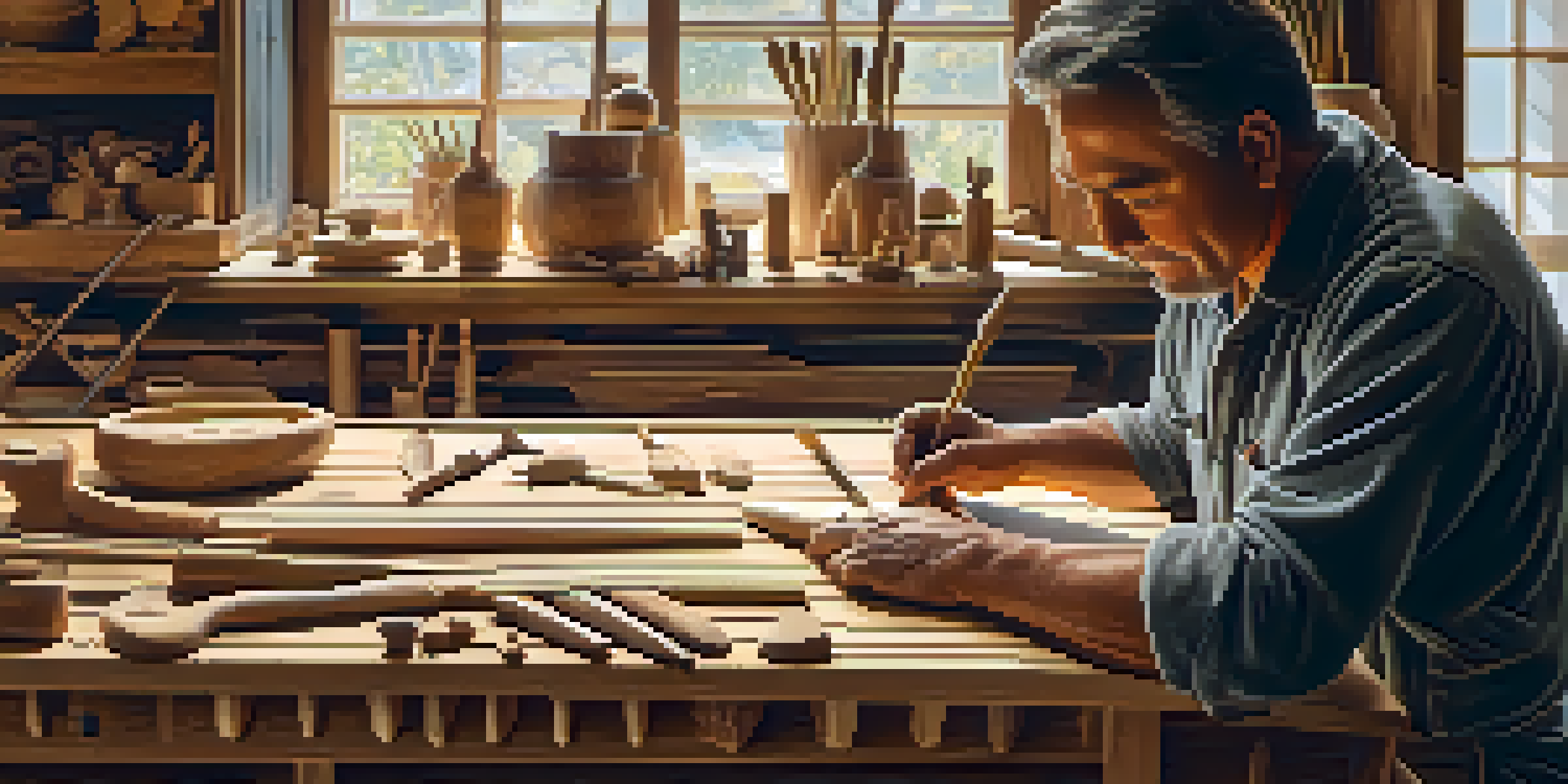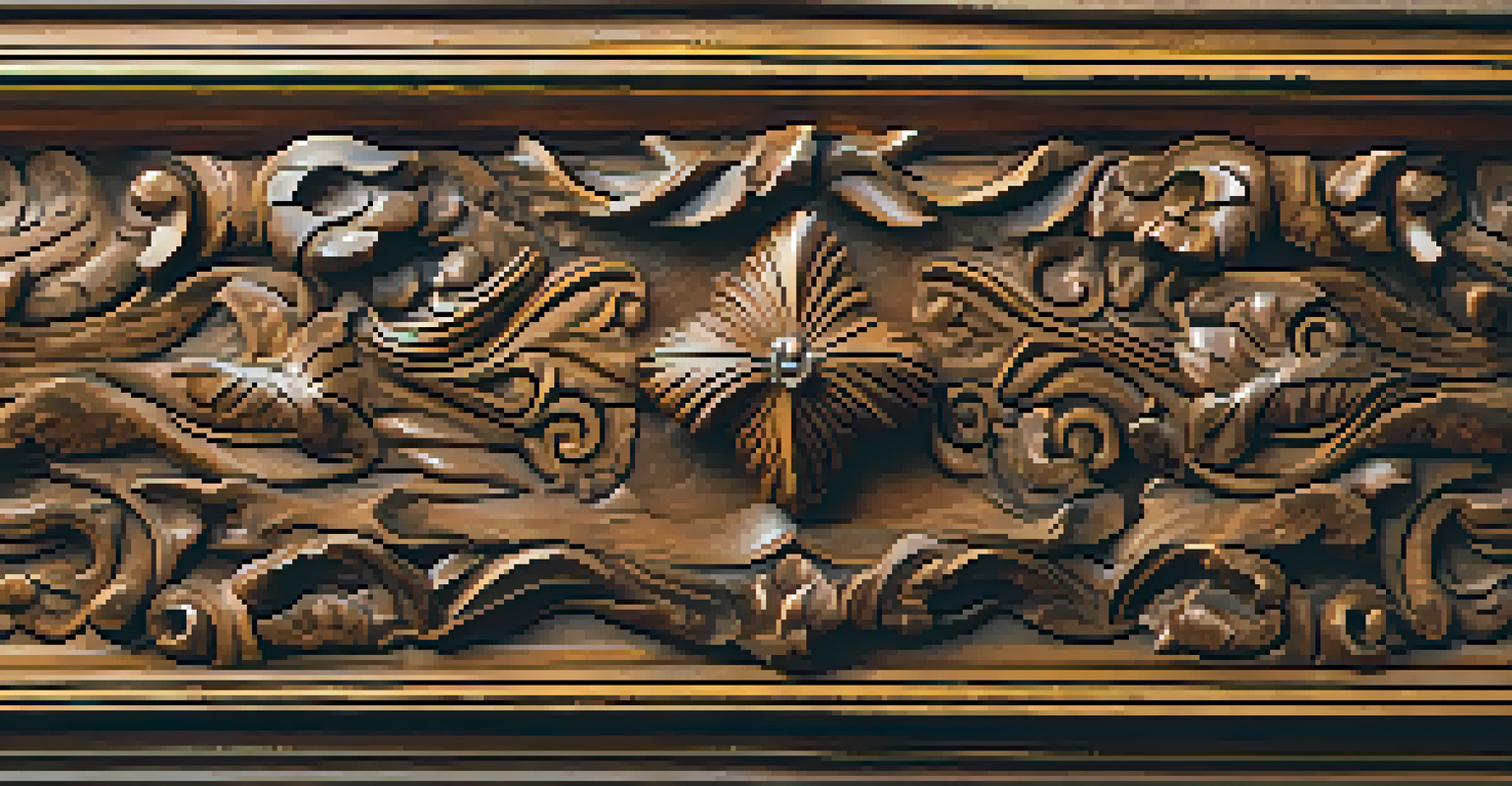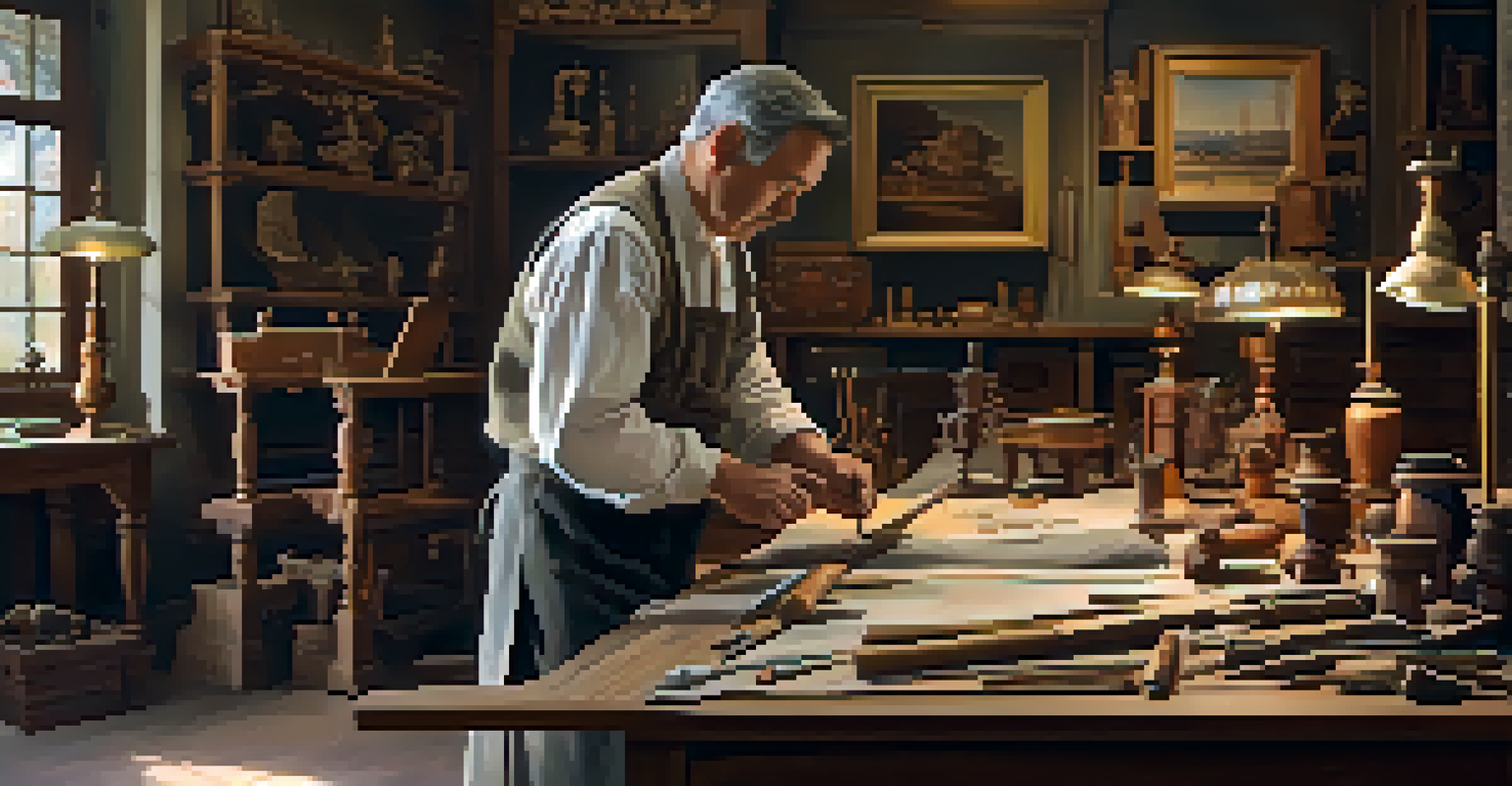Historical Carving Methods in Restoration Projects Explained

Understanding the Importance of Historical Carving Methods
Historical carving methods play a vital role in restoration projects, ensuring that the integrity of a structure or object is preserved. These techniques not only enhance the aesthetic appeal but also maintain the historical significance tied to the original craftsmanship. By utilizing traditional methods, restorers pay homage to the artisans of the past, allowing future generations to appreciate the artistry involved.
The past is never dead. It's not even past.
Many restoration projects aim to replicate the original appearance and functionality of a piece, which is where historical carving techniques shine. They help to bridge the gap between the past and present, creating a seamless integration of new materials with old designs. This approach fosters a deeper understanding of history, as modern-day artisans delve into the methods used by their predecessors.
Incorporating historical carving methods can also lead to more sustainable practices in restoration. Many traditional techniques utilize readily available materials and tools, reducing the environmental impact. As a result, restorers can honor the past while contributing positively to the present.
Traditional Tools Used in Historical Carving
The tools employed in historical carving often reflect the period and culture they originate from. Hand tools like chisels, gouges, and mallets are commonly used, allowing artisans to have precise control over their work. Unlike modern power tools, these hand tools require a level of skill and patience, which can lead to a more thoughtful and detailed approach to carving.

For instance, a woodworker in the 18th century might have relied on a specific set of chisels, which were crafted by local blacksmiths. This not only made each tool unique but also fostered a sense of community among artisans. Today, restorers often seek out similar tools to maintain authenticity, connecting them to the techniques of the time.
Value of Historical Carving Techniques
Historical carving methods are essential for preserving the integrity and aesthetic appeal of restoration projects.
Moreover, the use of traditional tools can also involve a learning curve, as modern craftsmen must practice to master these age-old techniques. This journey not only enriches their skill set but also deepens their appreciation for historical craftsmanship.
Carving Techniques: From Relief to Intaglio
Carving techniques can vary widely, with relief and intaglio being two prominent styles. Relief carving involves creating a raised design that stands out from the background, while intaglio refers to carving designs into the surface, allowing the image to be recessed. Understanding these differences is crucial for restorers aiming to replicate the original work accurately.
The beauty of craftsmanship is that it is a way of expressing one's soul through the hands.
For example, relief carving is often seen in architectural elements like friezes or decorative moldings, where the figures project from the surface. In contrast, intaglio might be used in items like engraved plates, where the design is etched into the material. Each technique carries its own set of challenges and requires different skill sets.
By mastering these carving methods, restorers can ensure that their work resonates with the original intent and artistry. This dedication to technique not only enhances the visual appeal but also preserves the historical narrative embedded in the craftsmanship.
The Role of Patinas and Finishes in Restoration
Patinas and finishes play a crucial role in the final appearance of carved pieces. These treatments can enhance the depth and character of the carving, making it appear more authentic and original. A well-applied patina can also protect the material from environmental damage, ensuring longevity.
For instance, an antique wooden sculpture may have been originally finished with a natural oil that deepens its color over time. Restorers must be mindful of these historical finishes, as they contribute significantly to the piece's overall aesthetic. By mimicking these traditional practices, restorers can revive the essence of the original work.
Challenges in Restoration Practices
Restorers face challenges such as sourcing traditional materials and the time-consuming nature of hand-carving.
Moreover, understanding the chemistry of finishes is essential for modern restorers. Different materials react uniquely to various treatments, and choosing the right finish can make all the difference in preserving the integrity of the work.
Challenges Faced When Using Historical Carving Methods
While historical carving methods offer many benefits, they also present unique challenges. One major hurdle is the availability of traditional materials, which may no longer be easily accessible. This limitation can hinder the restoration process, forcing artisans to adapt their techniques or source alternative materials that may not have the same historical significance.
Additionally, the time-consuming nature of hand-carving can be daunting. Restorers often have to balance the desire for authenticity with project deadlines, leading to tough decisions. This tension between quality and efficiency is a common struggle in the restoration community.
Despite these challenges, many craftsmen are committed to preserving traditional techniques. Their passion for history and artistry drives them to find innovative solutions, ensuring that these methods continue to thrive in modern restoration projects.
Case Studies: Successful Restoration Projects
Examining successful restoration projects can illuminate the effectiveness of historical carving methods. For instance, the restoration of a historic cathedral often involves meticulous attention to the original carvings that adorn its façade. By employing traditional techniques, restorers can replicate the intricate details that define the building's character.
Another example is the revival of antique furniture, where skilled artisans use historical carving methods to restore pieces to their former glory. These projects often require a deep understanding of the original design and craftsmanship, showcasing the importance of preserving techniques passed down through generations.
Future of Craftsmanship Preservation
There is a promising future for historical carving as artisans embrace sustainability and educational programs to pass down techniques.
These case studies serve not only as inspiration but also as a testament to what can be achieved when historical methods are appropriately applied. They highlight the enduring value of traditional craftsmanship in our ever-evolving world.
The Future of Historical Carving in Restoration
The future of historical carving methods in restoration projects looks promising, as a growing number of artisans recognize the importance of preserving these techniques. With an increasing interest in sustainability and authenticity, many are returning to traditional methods to create a more meaningful connection to the past.
Educational programs focused on historical craftsmanship are also gaining traction, ensuring that the knowledge and skills required for these techniques are passed down to future generations. Workshops and apprenticeships are becoming more popular, providing aspiring artisans with the hands-on experience they need.

As technology continues to advance, there's potential for integrating modern tools with traditional techniques. This hybrid approach could lead to innovative solutions while still honoring historical methods, allowing restorers to maintain authenticity in a rapidly changing world.